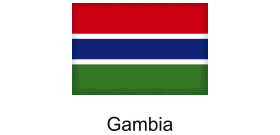 UNESCO designates 11 new biosphere reserves… Gambia’s Niumi Biosphere named
UNESCO designates 11 new biosphere reserves… Gambia’s Niumi Biosphere named
UNESCO has approved the designation of 11 new biosphere reserves in 11 countries, including Belgium and Gambia for the first time and two transboundary biosphere reserves. The other new biosphere reserves are located in Colombia, Dominican Republic, Italy, Mongolia, the Kingdom of the Netherlands, the Philippines, Republic of Korea, Slovenia and Spain. With these new biosphere reserves covering a total area of 37 400 km², equivalent to the size of the Netherlands, the World Network of Biosphere Reserves now totals 759 sites in 136 countries.
“The new designations come at a pivotal moment for humanity, as it grapples with a global biodiversity crisis intertwined with climate disruption. At a time when the international community is being called upon to increase the number of protected areas, these new biosphere reserves play an essential role in sustainably preserving the biodiversity, improving the living conditions of local populations and Indigenous Peoples and fostering scientific research” Audrey Azoulay, UNESCO Director-General.
These additions were decided during the 36th session of the International Co-ordinating Council, the governing body of UNESCO’s Man and the Biosphere programme, which is composed of 34 representatives of UNESCO Member States. The Council held its session in Agadir, Morocco, from 2 to 5 July following the UNESCO Conference on Soils.
Biosphere reserves are an essential component of UNESCO’s mandate as the United Nations’ organisation for sciences. Each biosphere reserve promotes innovative local sustainable development solutions, protects biodiversity, and addresses climate disruption. They also support local and Indigenous communities through practices such as agro-ecology, water management, and the generation of green income.
Biosphere reserves contribute to helping achieve the targets set by States upon the adoption of the Kunming-Montreal Global Biodiversity Framework in December 2022, which includes designating 30% of the Earth’s land and marine surface as protected areas and restoring 30% of the planet’s degraded ecosystems by 2030.
Niumi Biosphere Reserve (Gambia)
Stretching along the north bank of the Gambia River, the biosphere
reserve lies adjacent to Senegal’s Delta de Saloum Biosphere Reserve in
the north. Within its boundaries, mangroves dominate the coastal areas
and riverbanks, whereas, downstream, striking red limestone formations
punctuate tropical forests and open savannah woodland.
The biosphere reserve safeguards some of West Africa’s last pristine mangrove forests, alongside the Bao Bolong Wetland Reserve and various State forests. Notably, the biosphere reserve encompasses a Ramsar wetland and the UNESCO World Heritage site Kunta Kinteh Island, historically known as a place where enslaved peoples were held before being transported to the Americas during the 16th and 17th centuries.
With a sprawling expanse of 1 937 km², the biosphere reserves is home to approximately 178 000 inhabitants, who make a living mostly with farming and fisheries. It is the first biosphere reserve to be designated in The Gambia.
